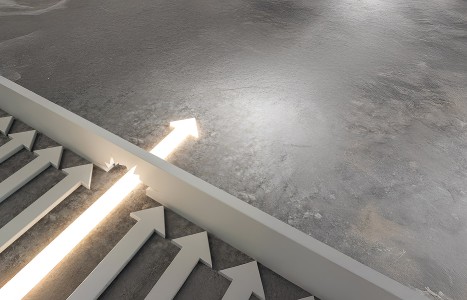You became a chiropractor to serve people, not an insurance company. You deserve to run a business that aligns with your values, supports your family and lights you up. Cash-based care isn’t just a pricing model – it’s a philosophy rooted in freedom, trust and respect for your patients and for yourself. Here's why - and how - to do it.
Care Options for Plantar Fasciitis
Plantar fasciitis generally presents as "a sharp heel pain that radiates along the bottom of the inside of the foot. The pain is often worse when getting out of bed in the morning."1 Plantar fasciitis can occur in runners or other athletes who repetitively land on the foot. Another susceptible group is middle-aged people who spend much time on their feet. More rarely, the fascia becomes inflamed after a single traumatic event, such as landing wrong after a jump or running a long hill. The vast majority (95 percent) will respond to conservative care and not require surgery.2 Proper treatment is necessary, however, to allow for continued participation in sports and daily activities and avoid chronic damage.
The plantar fascia is the major structure that supports and maintains the arched alignment of the foot.3 This aponeurosis functions as a "bowstring" to hold up the longitudinal arch. Plantar fasciitis develops when repetitive weight-bearing stress irritates and inflames the tough connective tissues along the bottom of the foot. High levels of strain stimulate the aponeurosis to try to heal and strengthen. If the biomechanical strain continues, it overwhelms the body's ability to repair, and the ligaments begin to fail. It is this tear/repair process that causes the chronic, variable symptoms that can eventually become unbearable for some patients.
Since the plantar fascia inserts into the base of the calcaneus, the chronic pull and inflammation can stimulate the deposition of calcium, resulting in a classic heel spur seen on a lateral radiograph. Unfortunately, there is no correlation between the presence of a heel spur and plantar fasciitis. Many heel spurs are clinically silent, and most cases of plantar fasciitis do not demonstrate a calcaneal spur.4
Biomechanical evaluation may reveal either excessive pronation or supination. The flatter, hyperpronating foot overstretches the bowstring function of the plantar fascia, while the high-arched, rigid foot places excessive tension on the plantar aponeurosis. In either case, it is the combination of improper foot biomechanics and excessive strain that causes the connective tissue to become inflamed. A careful assessment of the weight-bearing alignment of the lower extremities is helpful, since many patients will have functional imbalances up the kinetic chain into the pelvis and spine.
Direct palpation of the plantar fascia will demonstrate discrete painful areas, most commonly at the insertion on the anteromedial calcaneus.5 Fibrotic thickenings are frequently felt - these are remnants of the repetitive "tear and repair" process. With the foot relaxed, grasp the toes and gently pull them up into passive dorsiflexion. Since this maneuver stretches the irritated plantar aponeurosis, it is frequently quite painful and is an obviously positive objective sign.
Standard temporary support procedures for strained plantar fascia can be provided with figure-eight taping and initial restriction of repetitive and straining activities. Immobilization, however, is not recommended. Ice massage and/or cold packs often help to reduce pain and inflammation. Other steps that can be taken include ultrasound (initially pulsed, then constant and direct) once inflammation has subsided, along with the use of vitamin C with bioflavonoids (which is a natural anti-inflammatory that can speed healing). In addition, transverse friction massage helps to stimulate blood flow and collagen deposition.6
If the feet are pronated, recommend custom-made, flexible orthotics to support the arches and reduce the stress on the plantar fascia. For the rarer cases of supinated feet, recommend custom-made orthotics that support the arches and offer added viscoelastic material to cushion the feet and decrease the amount of shock at heel strike. When ordering orthotics, ask for a divot in the surface of the material under the heel. This helps to spread pressure away from the fascial insertion.
Recommend the runner's stretch for the calf and the bottom of the foot. Demonstrate toe-curl exercises (while sitting, gather a towel on the floor up under the arch) for intrinsic muscle strengthening. For extrinsic muscle strengthening, have the patient perform toe raises (standing on the edge of a stair, slowly rising up on the balls of the feet) and perform the ankle-stabilizing series with exercise tubing.7
Plantar fasciitis usually responds well to focused, conservative treatment. One of the most important treatment methods is to reduce any tendency to pronate excessively. In addition to custom-made orthotics, runners should wear well-designed shoes that provide good heel stability. The use of custom-made orthotics can prevent many overuse problems from developing in the lower extremities. Investigation of foot biomechanics is a good idea for all patients, but especially for those who are recreationally active.
References
- Souza TA. Differential Diagnosis for the Chiropractor. Gaithersburg, Md.: Aspen Publications, 1997:354.
- Baxter DE. The heel in sport. Clin Sports Med, 1994; 13:685-93.
- Huang CK, et al. Biomechanical evaluation of longitudinal arch stability. Foot Ankle, 1993;14:353-7.
- Lapidus PW, Guidotti FP. Painful heel: report of 323 patients with 364 painful heels. Clin Orthop, 1965;39:178.
- Subotnick SI. Sports Medicine of the Lower Extremity. New York: Churchill-Livingstone, 1989:237.
- Lear L. Transverse friction massage. Sports Med Update, 1996;10:18-25.
- Kibler WB, et al. Functional Rehabilitation of Sports and Musculoskeletal Injuries. Gaithersburg, Md.: Aspen Publishers, 1998:280.


